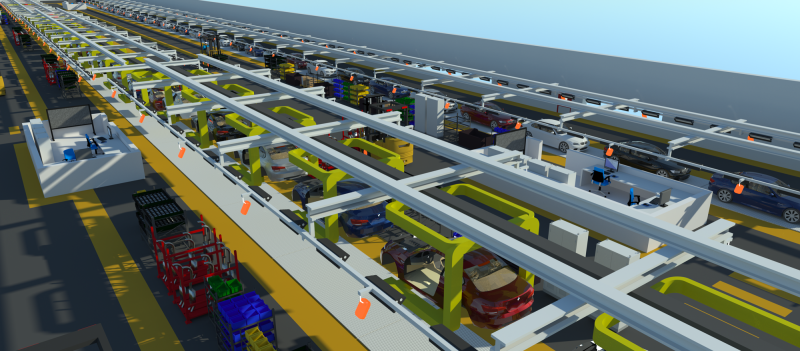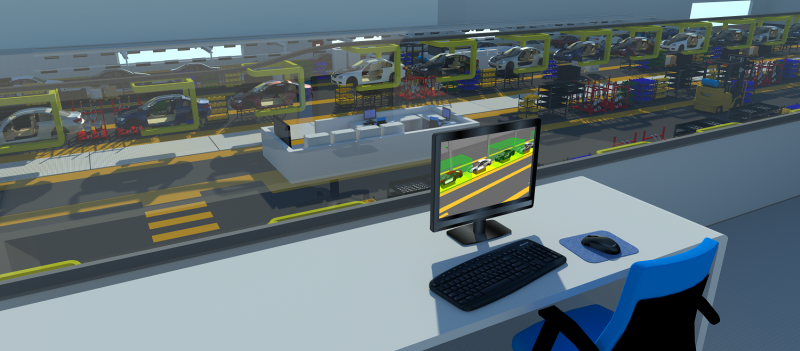 You don’t have to look far to find an article citing Industry 4.0 as the next big thing for manufacturing. However, while it is now a hot topic – with manufacturers across the world developing related strategies – the concept behind it is not so new. In fact there are presentations describing the Factory of the Future that could have been written today, but were actually developed in 1986 – more than 30 years ago.
You don’t have to look far to find an article citing Industry 4.0 as the next big thing for manufacturing. However, while it is now a hot topic – with manufacturers across the world developing related strategies – the concept behind it is not so new. In fact there are presentations describing the Factory of the Future that could have been written today, but were actually developed in 1986 – more than 30 years ago.
So what’s changed to cause such excitement today? New Industrial Internet of Things (IIoT) technologies and solutions have matured to the point where they can be relied on to run production-critical systems. At the same time as they have embraced scalability: these solutions scale from small to large, making Industry 4.0 adoption a path, not a sea-change. It’s now possible to implement the Industry 4.0 vision on any scale providing visibility and adaptive, context-sensitive controls over a single process, a plant or the entire value chain. And it is this which makes Industry 4.0 such an exciting prospect – it has become attainable.
Creating virtual manufacturing plants
 IIoT is based on computers optimising processes in real-time and to do this they need visibility of, and control over, processes. The data providing this visibility needs to be digital; computers can’t look at gauges but they can receive a stream of data. Similarly the controls have to be digital; computers can’t reach out and touch products directly, they need to direct tools and devices via software.
IIoT is based on computers optimising processes in real-time and to do this they need visibility of, and control over, processes. The data providing this visibility needs to be digital; computers can’t look at gauges but they can receive a stream of data. Similarly the controls have to be digital; computers can’t reach out and touch products directly, they need to direct tools and devices via software.
If a process has different steps across multiple physical workstations, then location is a critical factor to ensure that the right tools, at the right settings, are used in the right workstation on the right WIP at the right time. To manage a complex flow, manufacturers need to know where everything is – and that location data must be digitized. Similarly, to ensure that everything is happening in the right place, there needs to be location-based control and this too must be virtual to implement the Industry 4.0 vision.
More importantly, in the context of very complex operations, those controls need to be fully flexible and adaptable in real-time, and the only way to do that is to virtualize them: once your controls are software based they can be changed on the fly in arbitrarily complex. And this is where an IIoT platform like Ubisense’s SmartSpace excels, creating location-aware environments by monitoring many thousands of interactions in real-time. Ubisense’s SmartSpace adds location context to existing data and creates the framework for virtualised controls. It enables manufacturers to manage real-time location and identification data from multiple sources to support industrial-scale mission-critical visibility and control. Detecting and responding to real-world interactions between people, things and the environment enables new kinds of visibility and control applications. And it is this type of technology that can be installed now to pave the way for Industry 4.0 adoption and creating factories of the Future.
 In a typical example, an automotive OEM finds itself unable to accommodate a new process on the assembly line since it requires a process time longer than the takt time on the line. Since workstations are defined in the traditional, mechanical manner, all have exactly the same process time. SmartSpace breaks that fixed workstation paradigm by keeping track of the location of tools and vehicles on the line and creating virtual workstations.
In a typical example, an automotive OEM finds itself unable to accommodate a new process on the assembly line since it requires a process time longer than the takt time on the line. Since workstations are defined in the traditional, mechanical manner, all have exactly the same process time. SmartSpace breaks that fixed workstation paradigm by keeping track of the location of tools and vehicles on the line and creating virtual workstations.
Just like physical workstations, as vehicles enter and exit these software defined stations, processes are triggered. In this case a virtual workstation may be temporarily lengthened for the takt-time violating process without any other changes to the line. It’s not Industry 4.0 in its grandest vision of a fully connected value chain, but it is Industry 4.0 as applied to context sensitive, adaptive controls on the scale of a single workstation.
Steps to Industry 4.0 adoption
There is much discussion around Factories of the Future, IIoT and Industry 4.0 but not many manufacturers yet know how they are going to get there. There is a lot more research needed and many practical details still to be confirmed. The best path forward is to avoid the bigger barriers associated with wide scale Industry 4.0 adoption, such as security, networks, culture and skills and focus on internal change: multi-department coordination, IT-lead initiatives and learning the value of real-time visibility in process controls. Cyber-physical systems can be adopted in islands, building local connectivity that doesn’t even need to leave the plant. Once these islands have paid for themselves with positive ROI it is a much easier step to then connect them. By that point the decision to make a strategic investment in connectivity won’t be a risk, but an inevitability.


